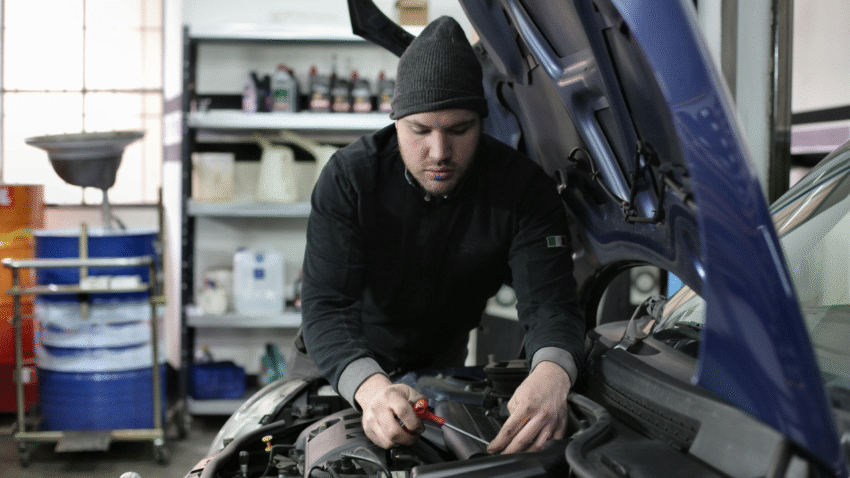Introduction
If you love crafting, sewing, painting, or any other creative hobby, you know how important it is to have a dedicated space. Instead of working on the dining room table or squeezing into a small spare room, why not transform your garage into a spacious, organized craft studio? Converting a garage offers room for storage, large work surfaces, and the freedom to spread out your projects without disrupting the rest of the house. In this guide, you’ll learn how to convert your garage into a craft studio from planning to decorating.
Why Convert Your Garage into a Craft Studio?
A garage craft studio provides:
- Ample space for large projects and supplies.
- Better organization with dedicated storage systems.
- Fewer distractions so you can focus on your work.
- Room for specialized equipment like sewing machines, easels, or kilns.
- An inspiring environment tailored to your style and needs.
Whether you’re crafting for fun or running a small business, a well-designed craft studio can boost productivity and enjoyment.
Step-by-Step Guide to Converting Your Garage into a Craft Studio
1. Plan Your Space and Layout
Start by deciding how you’ll use the space:
- Work zones: Separate areas for cutting, sewing, painting, assembly, or other crafts.
- Storage zones: Shelves, drawers, and cabinets for supplies and tools.
- Display zones: A space for showcasing finished work or inspirational pieces.
Pro Tip: Use painter’s tape to mark out furniture placement before buying anything.
2. Insulate and Control the Temperature
Craft materials can be sensitive to extreme heat, cold, or humidity. To protect them and keep yourself comfortable:
- Insulate walls, ceiling, and garage door.
- Seal gaps around windows and doors.
- Install heating and cooling such as a mini-split HVAC, space heater, or portable AC.
- Use a dehumidifier in damp climates to prevent mold and material damage.
3. Install Adequate Lighting
Good lighting is essential for detail work:
- Natural light: Add windows or skylights if possible.
- Overhead LED fixtures: Provide bright, even light without shadows.
- Task lighting: Desk lamps or under-shelf lights for close-up work.
- Adjustable light temperature: Warm light for ambiance, cool light for accuracy.
4. Upgrade Electrical Outlets
Craft studios often require multiple tools and devices:
- Install multiple grounded outlets along work areas.
- Consider dedicated circuits for high-powered tools.
- Add USB charging ports for phones and tablets.
- Use surge protectors to keep electronics safe.
5. Choose Durable Flooring
You need flooring that’s easy to clean and can handle spills:
- Epoxy-coated concrete for a smooth, stain-resistant surface.
- Vinyl planks or tiles for comfort and style.
- Rubber mats in high-use areas for added cushioning.
6. Add Storage Solutions
Organized storage keeps your craft studio functional:
- Shelving units: Adjustable shelves for boxes and bins.
- Drawer cabinets: Perfect for small supplies like beads, thread, or paints.
- Pegboards: Hang tools for easy access.
- Clear plastic bins: Quickly see what’s inside.
- Labeling system: Keeps everything easy to find.
7. Set Up Work Surfaces
Large, sturdy worktables are a must:
- Folding tables: Flexible for changing layouts.
- Kitchen islands or workbenches: Provide extra storage underneath.
- Rolling carts: Move supplies to wherever you’re working.
8. Personalize Your Craft Studio
Make the space inspiring:
- Paint walls in uplifting colors like soft blues or bright yellows.
- Hang a vision board with ideas and inspiration.
- Add a sound system for music or podcasts while you work.
- Display some of your best creations for motivation.
9. Create a Comfortable Seating Area
If you spend hours crafting, comfort is key:
- Choose ergonomic chairs with adjustable height and lumbar support.
- Use anti-fatigue mats for standing work areas.
- Keep a small lounge chair or loveseat for breaks.
10. Keep Safety in Mind
Depending on your craft, you may need to consider:
- Ventilation systems for paints, adhesives, or fumes.
- Fire extinguishers near heat sources.
- First-aid kits for minor cuts and burns.
- Proper storage of flammable or hazardous materials.
Common Mistakes to Avoid
- Ignoring Climate Control
- Problem: Materials warp, paint dries unevenly, or adhesives fail.
- Solution: Insulate and regulate temperature before setting up.
- Poor Lighting Choices
- Problem: Eye strain and inaccurate colors.
- Solution: Combine natural, overhead, and task lighting.
- Cluttered Work Areas
- Problem: Reduces productivity and causes frustration.
- Solution: Use labeled storage and regular clean-ups.
- Insufficient Electrical Capacity
- Problem: Overloaded circuits and tripped breakers.
- Solution: Upgrade electrical system if needed.
- Not Planning for Growth
- Problem: Outgrowing your setup quickly.
- Solution: Leave space for new tools and storage.
Extra Garage Tips & Hacks
- Use Vertical Space: Hang racks from the ceiling for seldom-used supplies.
- Add a Small Sink: Makes cleaning brushes and tools easier.
- Create Mobile Workstations: Perfect for multi-step projects.
- Related Tip: Check our guide on how to create a dedicated hobby space in your garage for more multi-purpose design ideas.
Conclusion
Learning how to convert your garage into a craft studio gives you the freedom to create a customized space that supports your hobbies and fuels your creativity. With the right planning, organization, and personal touches, you can turn an unused garage into a craft lover’s paradise.
Bookmark this guide to start designing a functional, inspiring craft studio today.
